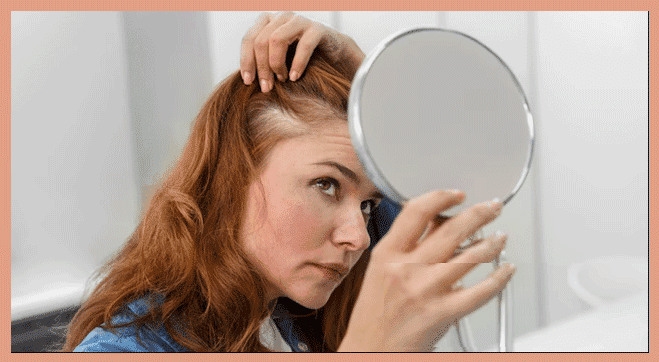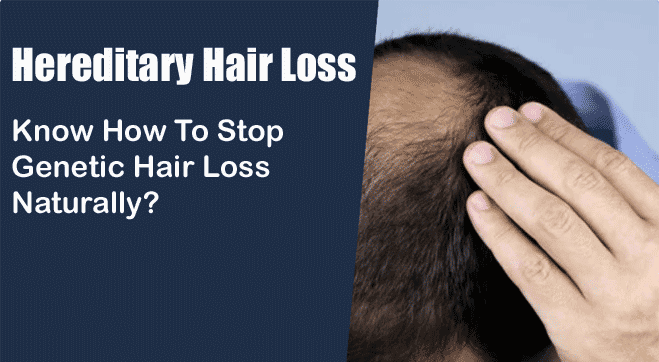Female pattern baldness, also known as female androgenetic alopecia, is a common hair loss condition that affects millions of women worldwide. While often considered a men’s issue, hair loss can also have a profound impact on women’s self-esteem and overall well-being.
Approximately 6% to 38% of healthy women tend to experience some degree of frontal hair loss at some point in their lives. While men may experience pattern hair loss much earlier, 12% of women in their reproductive years may exhibit clinically detectable pattern hair loss by the age of 29 years and 25% of women by the age of 49 years.
What is Female Pattern Baldness?
Female pattern hair loss is a progressive and hereditary condition characterised by the gradual thinning of hair in women, typically manifesting as a widening part or a noticeable reduction in hair density on the scalp. Unlike male pattern baldness, which often results in a receding hairline and bald spots, excessive hair loss in women/baldness tends to affect the entire scalp’s top and front regions.
Most of us tend to shed at least 50 to 100 strands of hair on a daily basis and this doesn’t set off an alarming signal. However, if the hair loss is extreme and impacts your physical, aesthetic, and emotional well-being, you should consult with your healthcare provider.
While nutritional deficiencies and extreme levels of unmanaged stress are linked with frontal female pattern baldness, hormonal Imbalances in female, and underlying health conditions, such as PCOS, pregnancy, and menopause also put you at a higher risk of experiencing female baldness.
Types and Stages of Female Pattern Hair Loss (FPHL)
The key types of female pattern hair loss are:
- Androgenic Alopecia – Androgenetic alopecia in females is usually caused by genetic predispositions. In such conditions, females tend to have genetically shorter hair growth periods and a substantial gap between the hair shedding and regrowth phase. Females might also inherit smaller hair follicles and thinner strands as heredity from their parents. Females who have surpassed the puberty phase are susceptible to this type of female baldness at any point in their 20s to 60s.
- Alopecia Areata – Female Alopecia Areata, the female hair loss variant is characterised by sudden appearances of bald spots either around the parting line or the front of the head and across the scalp. It is an autoimmune condition in which your body attacks your hair follicles, causing female baldness. Autoimmune dysfunction, and environmental factors, such as allergies, infections, stress, hormone imbalances, and other autoimmune conditions are some of the leading Alopecia Areata causes in females.
- Cicatricial Alopecia – This is an irreversible female hair loss that can be caused due to scarring due to a group of conditions. In this type of hair loss in women, the healthy hair follicles are usually replaced by scar tissues, causing excessive hair loss.
- Traumatic Alopecia – Styling techniques, such as the usage of hot combs, straighteners, blow dryers, and certain dyes are chemicals known to cause frontal female pattern baldness as well as hair loss in the back of the head in females
- Traction Alopecia – Traction alopecia is another form of hair loss commonly observed in women, especially those who wear tight hairstyles like braids, weaves, or tight ponytails. The constant pulling and tension on the hair shafts can damage the follicles and result in hair loss, particularly around the hairline.
- Telogen Effluvium – Telogen effluvium is a temporary type of hair loss that can affect women due to various triggers such as childbirth, surgery, illness, or extreme stress. This condition disrupts the normal hair growth cycle, causing more hair follicles to enter the resting phase, leading to significant hair shedding.
Female pattern baldness can be categorised into several stages:
- Stage 1: Minimal thinning with a barely noticeable widening part.
- Stage 2: Thinning becomes more evident with a see-through scalp.
- Stage 3: Wider part and noticeable hair loss on the crown.
- Stage 4: Significant hair loss on the crown with increased scalp exposure.
The progression of female pattern hair loss may vary from person to person.
Did you know:
- 40% of women have visible hair loss by the time they are age 40
- Women with high-stress levels are 11 times more likely to experience hair loss
- The only medicine approved by the United States Food and Drug Administration (FDA) to treat female pattern baldness is minoxidil
Alopecia Symptoms in Females
The most common symptoms of female pattern baldness include:
- Gradual hair thinning, especially on the top and front of the scalp.
- Increased visibility of the scalp.
- An ever-widening partline.
- Reduced hair density and volume.
- Loss of eyebrow and eyelash hair
- Scalp itching or tingling
- Scalp sensitivity or pain
Watch out for these Alopecia symptoms in females to seek on-time diagnosis.
Read More: 8 Dry Fruits to Fortify Your Hair and Prevent Breakage
Causes of Female Pattern Baldness
Female pattern hair loss is primarily attributed to a combination of genetic and hormonal factors. One key player in this process is dihydrotestosterone (DHT), a derivative of the male hormone testosterone. DHT can bind to hair follicles in genetically predisposed individuals, leading to the miniaturisation of hair follicles. This miniaturisation results in shorter, finer, and less pigmented hair, eventually leading to hair loss.
Some of the other leading female pattern baldness causes include:
- Genetics
- Age
- Menopause and higher levels of oestrogen
- Androgenic activities due to underlying endocrine conditions, such as an ovarian tumour)
Hormones Responsible for Alopecia In Females
Several hormones can contribute to alopecia in females:
- Androgens: Elevated levels of androgens, including DHT, can lead to hair follicle miniaturisation and subsequent hair loss.
- Oestrogen: Hormonal changes, such as decreased oestrogen levels during menopause, can also influence hair loss.
- Thyroid Hormones: Thyroid disorders, including hypothyroidism and hyperthyroidism, can disrupt the hair growth cycle and result in hair loss.
Who are at a Risk of Hair Loss Due to Alopecia?
Women of all ages can experience female pattern hair loss, but certain risk factors increase the likelihood of developing this condition:
- A family history of hair loss.
- Hormonal changes due to menopause or pregnancy.
- Polycystic ovary syndrome (PCOS).
- Thyroid disorders.
- High-stress levels.
- Hairstyles that put stress on hair follicles, such as tight ponytails or braids.
Diagnosis of Female Pattern Baldness
Diagnosing hair loss in women typically involves a thorough medical history and physical examination by a healthcare professional.
Your healthcare provider will use a densitometer to measure the thickness of hair follicles to analyse the thinning pattern on the scalp. You might be recommended to undergo certain blood tests for hair loss in females or hair fall screening to gauge your thyroid hormone level, androgens, iron, and other key substances that are thought to be responsible for hair loss.
If your healthcare provider suspects other underlying health conditions to cause hair loss, you will be checked for signs of infection and skin diseases through a scalp biopsy.
Management & Treatment for Female Pattern Hair Loss
Female pattern baldness mostly manifests as receding hairlines in females, frontal female pattern baldness or balding spots across the scalp can’t be reversed but managed with the appropriate interventions.
Medical Treatment For Female Pattern Baldness
- Minoxidil: Over-the-counter topical minoxidil is a common treatment for female pattern baldness. It helps promote hair growth and can slow down hair loss.
- Prescription Medications: Some medications, such as finasteride, are prescribed off-label to inhibit the production of DHT.
- Platelet-Rich Plasma (PRP) Therapy: This procedure involves injecting a patient’s own platelet-rich plasma into the scalp to stimulate hair growth.
- Hair Transplantation: In severe cases, hair transplantation surgery can restore hair to thinning or bald areas.
- Cosmetic hair patches can also be leveraged to address severe cases of female pattern hair loss. It is a non-surgical intervention that offers females (who don’t have any donor areas, and are undergoing chemotherapy and other cancer treatments) the flexibility to style their hair as per their preferences.
- Styling techniques can also be leveraged to prevent the visibility of female receding hairlines and balding patches in the frontal part of the head and parting lines.
- Laser and hormone therapies can help address the hormone-related cause of female baldness.
Home Remedies and Lifestyle Strategies for Pattern Hair loss in Women
If you are wondering how to cure baldness naturally, you can opt for some of the time-tested hair loss prevention and management methodologies and best practices. While these approaches may not completely reverse hair loss, they can help manage the condition:
- Healthy Diet: A well-balanced diet rich in vitamins and minerals, especially biotin and iron, can support hair health.
- Stress Management: Reducing stress through relaxation techniques or counselling can improve hair loss outcomes.
- Gentle Hair Care: Avoiding harsh styling practices, heat, and chemicals can minimise damage to existing hair.
- Scalp Massage: Massaging the scalp may increase blood flow to hair follicles, promoting hair growth.
Read More: Are Superfoods for Hair Growth the Key to Healthy Hair?
Prevention Tips for Female Baldness
Although it may not always be possible to prevent female pattern baldness entirely, these tips can help reduce the risk and slow down the progression:
- Maintain a Healthy Lifestyle: Eat well, exercise regularly, and manage stress.
- Avoid Tight Hairstyles: Opt for loose hairstyles that don’t put undue stress on hair follicles.
- Limit Heat and Chemical Treatments: Reduce the use of hair dryers, straighteners, and harsh hair products.
- Consult a Healthcare Professional: If you notice unusual hair loss, seek medical advice promptly to address any underlying issues.
A Note From HealthcareOnTime
Female pattern hair loss can be a distressing condition, and can impact a woman’s physical, and psychological well-being. It is essential to understand that effective female baldness treatments and management strategies can play a crucial role in managing the extent of symptoms of hair loss in women.
If you or a loved one is experiencing hair loss, do consult with a healthcare professional to determine the root cause of female hair loss and explore appropriate options for alopecia treatment for women. With the right approach and care, it’s possible to address hair loss in women and regain confidence in your appearance.
HealthcareOnTime offers two packages Female Hair Fall Screening Package (47 parameters) and Male Hair Fall Screening (43 parameters) These packages provide convenient and efficient at-home blood tests for assessing hair loss, you can also opt for DHT testing at-home as recommended by your healthcare professional in the most convenient, quick, and hassle-free manner.
Disclaimer: The information listed here is strictly for educational purposes and is not intended to offer personal medical advice. Do consult your physician for any questions you may have regarding a medical condition. It’s not advised to disregard professional medical advice or delay in seeking it because of any information listed here. The Nutrition Source does not recommend or endorse any products
Sources
Ref Links:









